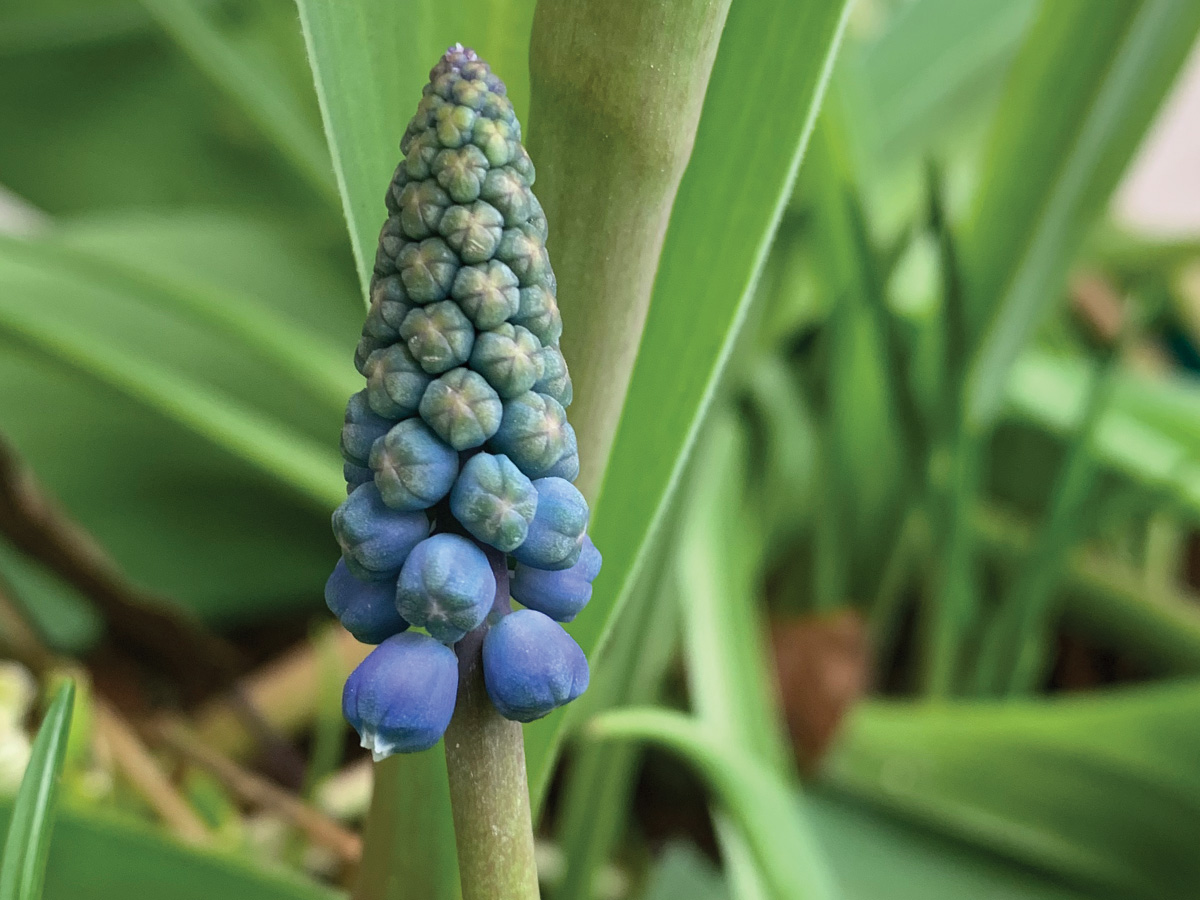Spring into the New Year!

Photo by Deborah Maier
The amaryllis and narcissus were wonderful this holiday season. Lots of bold bloom colours to cheer us up during these dark months. Wouldn’t it be nice to continue the blooming trend and have some early spring colour in our homes? For anyone who did not get their spring blooming bulbs planted before Calgary got hit with the wintry weather this fall, here is an option for you—forcing.
Forcing is the term applied to the process of conditioning plants to bloom at a specific time. It can be simulating conditions to get them to put on a spectacular show in our homes when they typically bloom in their native environment or getting them to bloom when we would like to have flowers.
Most spring blooming bulbs need a cool dormant period of at least 12 weeks below 15 °C for the flower to form. If they are stored a bit too warm, the bulbs will only grow roots and leaves. If the bulbs are stored at room temperature, they can die. A healthy viable bulb will be firm when gently squeezed. It should have its protective papery skin, called a tunic.
If you’ve been storing the bulbs in a cool place, in the fridge or a garage for example, since the end of October they will only need a few more weeks of cool dormancy. You have two options for planting. You can wait for mid-January and pot them up in a pretty container and leave them in a bright spot to sprout and bloom. Or you can pot them up now and put them back in cool storage.
Even if you are planting bulbs in a pot, you should follow the rule of planting the top of the bulb three times its height deep. So, if your tulip bulb is 4 cm tall from basal plate to tip, the tip should be 12 cm below the soil surface when planted. The planting depth helps insulate the bulb from variable temperatures when it is planted outside. When planted in pots indoors, the depth helps support the flower stem and prevents it from flopping.
For the best display, stack layers of bulbs with different bloom times, early, mid, and late spring, in the pot. Be sure to have a layer of soil between each layer of bulbs. When placing the bulbs, position them so the sprout of the bulb below has a clear path to the surface. Having bulbs with different bloom times gives the pot a longer flower show. However, if you have crocuses stored, it may be best to wait for the ground to thaw and then plant them outside.
They often won’t bloom until their second year, so they may not produce flowers in your pot. After potting up the bulbs, regardless of whether you are keeping them on the counter or putting them back in cool storage, water them thoroughly. It is important to get the soil wetted to the bottom of the container, so watch for water to exit the drainage hole at the bottom of the pot.
If you want to plant the potted bulbs in the ground later, follow the same care cycle as those planted in the ground. After the blooms have finished, place the pot in a bright spot outside. The leaves need to naturally die back. They will stay green for a while, recharging the bulb, then turn yellow and die. At that point, you can remove the spent foliage and plant the bulbs in the garden. Plant them in with other bulbs as they may not bloom again until the bulb has fully re-energized. A common recommendation is to discard forced bulbs, but I think it is worth putting them in the ground. I find my yard often has sprouts of unexpected blooms because I gave plants a chance.
To learn more about growing in Calgary, visit the Society’s website calhort.org and join us on February 11 for Think Spring! It’s a day of online learning to launch the gardening season.
